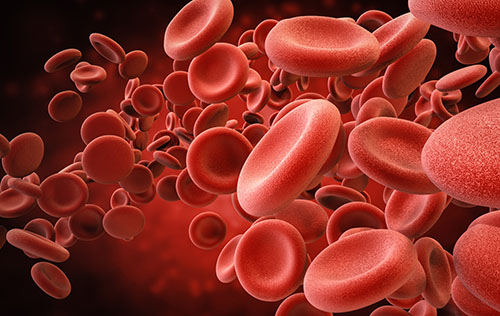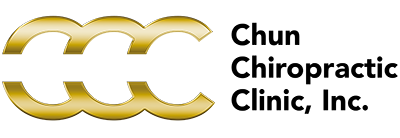What is PRP?

Let's look at an article about a popular, safe and effective sports medicine treatment performed by trained physicians known as PRP. It is used for many different disorders and injuries of the muscles, tendons, ligaments, cartilage and nerves as well as joint disorders.
We have been performing PRP in our clinic for over 10 years and have had great success bringing people natural healing with minimal side effects and avoiding surgeries year after year. For more information, please contact our clinic.
What Is PRP?
Platelet-rich plasma, or PRP, is a substance that’s thought to promote healing when injected. Plasma is a component of your blood that contains special “factors,” or proteins, that help your blood to clot. It also contains proteins that support cell growth. Researchers have produced PRP by isolating plasma from blood and concentrating it.
The idea is that injecting PRP into damaged tissues will stimulate your body to grow new, healthy cells and promote healing. Because the tissue growth factors are more concentrated in the prepared growth injections, researchers think the body’s tissues may heal faster.
The treatment hasn’t been definitively proven. It also hasn’t been approved as a treatment by the U.S. Food and Drug Administration. However, famous athletes like Tiger Woods and tennis star Rafael Nadal have been known to use these injections to help heal injuries.
What are the purposes of PRP injections?
Researchers are trying out PRP injections across a number of applications. Examples of these include:
- Hair loss: Doctors have injected PRP into the scalp to promote hair growth and prevent hair loss. According to a research article published in PubMed Central® (PMC) from 2014, PRP injections are effective in treating androgenic alopecia, which is also known as male pattern baldness.
- Tendon injuries: Tendons are tough, thick bands of tissue that connect muscle to bone. They are usually slow to heal after injury. Doctors have used PRP injections to treat chronic tendon problems, such as tennis elbow, Achilles tendonitis at the ankle, and jumper’s knee, or pain in the patellar tendon in the knee.
- Acute injuries: Doctors have used PRP injections to treat acute sports injuries, such as pulled hamstring muscles or knee sprains.
- Post-surgical repair: Sometimes doctors use PRP injections after surgery to repair a torn tendon (such as a rotator cuff tendon in the shoulder) or ligaments (such as the anterior cruciate ligament, or ACL).
- Osteoarthritis: Doctors have injected PRP into the knees of people with osteoarthritis. A 2015 research article published in PMC found that PRP injections were more effective than hyaluronic acid injections (a traditional therapy) for treating osteoarthritis. However, the trial was a small group of 160 people, so larger trials are needed for this to be conclusive.
It’s important to note that none of these uses have been definitively proven to provide results.
HOW DO YOU PREPARE FOR PRP INJECTIONS?
Generally speaking, there are few steps to preparing for PRP injections.
However, PRP can be injected in different ways. For example, sometimes a topical numbing lidocaine solution is applied to your scalp before injection. You may have to arrive early to a treatment session for this to be applied.
Other times, a local anesthetic is mixed with the PRP to reduce any discomfort. Sometimes, your doctor will inject or apply PRP during a surgery. In this instance, preparation for PRP injections would involve following your surgeon’s recommendations pre-surgery.
PRP injection process
Here’s what to expect from a typical PRP injection process:
A healthcare professional will draw a sample of your blood. The amount of the sample depends on where the PRP will be injected. For example, the amount of blood taken for injection into the scalp for one study was 20 milliliters. This is slightly larger than one teaspoon.
The blood is placed into a centrifuge. This is a machine that spins around very quickly, causing the blood components to separate. The separation process takes about 15 minutes. A technologist takes the separated plasma and prepares it for injection into the affected area.
Doctors will often use imaging, such as ultrasound, to pinpoint specific areas for injection, such as the tendon. Your doctor will then inject the PRP into the affected area. According to Emory Healthcare, this process usually takes around one hour.
How much does PRP cost?
According to the American Academy of Orthopaedic Surgeons, very few insurance plans will provide any reimbursement for PRP injections. The costs must largely be paid out-of-pocket. The costs can also vary from location to location and on how the injections are used. Some of the reported costs nationwide include the following:
- ABC News 7 in San Francisco reports PRP treatments for hair loss cost $900 for one treatment and $2,500 for a set of three treatments.
- The Washington Post reports that knee injections of PRP can cost anywhere from $500 to $1,200 per treatment.
Insurance companies consider PRP an experimental treatment. More scientific research will have to conclude its effectiveness before it is more widely covered.
What are the potential side effects of PRP?
Because PRP involves injecting a substance into the skin, there are potential side effects. PRP is autologous, which means it contains substances that come directly from your own body. This reduces the risks for an allergic reaction that can occur from injecting other medications, such as cortisone or hyaluronic acid. However, there are risks from the injection itself, including:
- infection
- nerve injuries
- pain at the injection site
- tissue damage
You should discuss these potential risks with your doctor, as well as the steps your doctor will take to minimize these risks.
What is the recovery time for PRP injections?
When PRP is injected following injury, your doctor may recommend that you rest the affected area. However, these recommendations are more related to the injury and less to the PRP injections. Most people can continue their daily activities following PRP injections.
Because PRP injections are intended to promote healing or growth, you may not notice an immediate difference after receiving the injections. However, in several weeks or months, you may observe that the area is healing faster or growing more hair than you would have expected if you hadn’t received PRP injections.
